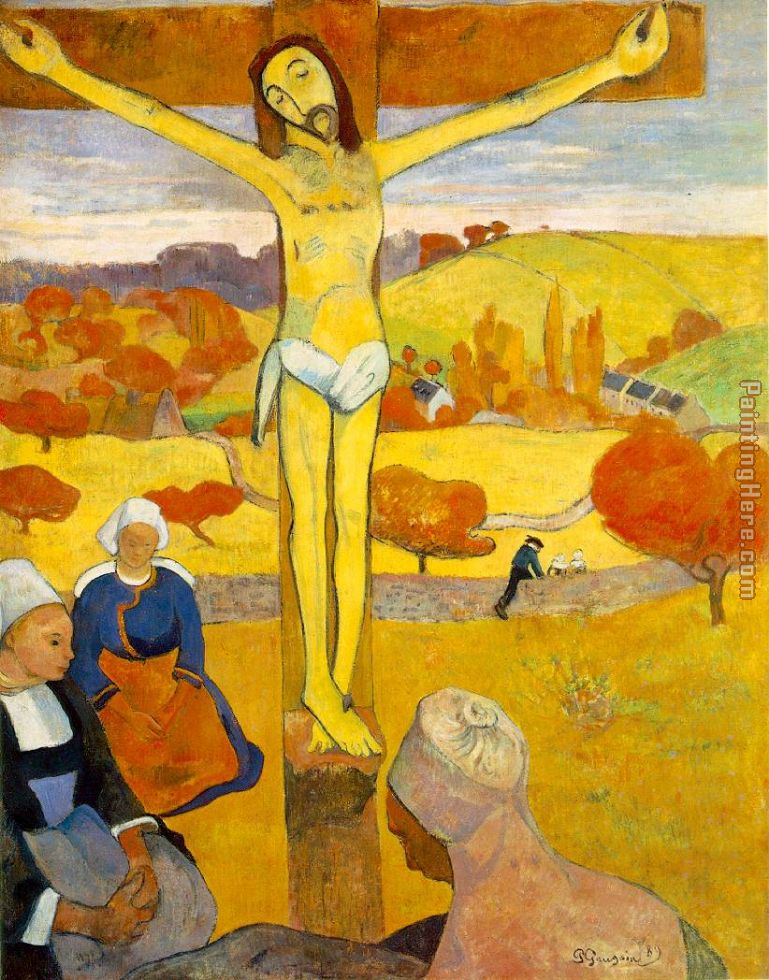Upon looking at the picture "The Yellow Christ" one can see that it is very different from a tradition painting of the crucifixion. The difference between the pictures is that the one shown above strays away from traditional and instead is Avant-Garde. To analyze how "The Yellow Christ" is in fact Avant-Garde, this blog post will examine the three criterion of Griselda Pollock's formula.
The three criterion of Pollock's formula (shown on page 167 of The Challenge of Avant-Garde are:
- reference: "one had to produce work that showed an awareness of what was already going on,"
- deference: "defer to the latest and most radical developments," and
- difference: "be involved in establishing difference that had to be both legible in terms of current aesthetics and criticism, and a definite advance on the current position."
As for the second criteria of the formula, "The Yellow Christ" follows the most recent movement of impressionism. Though the brushstrokes aren't as controlled they are still not detailed and smooth. As well, impressionists used certain color schemes to evoke emotional responses of the pieces, or to even symbolize emotional responses. Withing the painting "The Yellow Christ" the colors are more like the colors of fall season. As well, the sky is not bright and illuminating, but instead it is almost portrayed like the sun is setting. Using the colors of fall (of dying) and of the sun setting (darkness), it sets a dismal mood for the painting. As for the foreground, the faces of the women and of Christs are not joyful but saddened, showing that it is a saddened moment in the painting. With how the painting was done, it Gauguin followed the second criteria in Pollock's formula.
Now, the last criteria of Pollock's formula. Gauguin's painting was very different which is what Pollock's third criteria required. Gauguin, depicted a natural everyday setting however, he evoked the religious ties to that setting creating an emotional response by the viewer. By combining the beauty of the background as well as a religious icon he created the aesthetics of the painting. Painting this evoked a spiritual tie and response to Christ being crucified, as well as evoked a saddened feeling because (though the background was beautiful) it signified death, which was then portrayed by Christ on the Cross.
By figuring out the Gauguin's painting followed Pollock's formula we are conclude that Gauguin's painting is Avant-Garde, and very well done.

I really like how you related a lot of these aspects around the color of the piece. It makes sense, considering most of these colors weren't very "realistic" and not the average colors you would see in a painting regarding this subject matter. This definitely helps me understand more of how we could consider Gauguin as Avant-Garde.
ReplyDeleteI found your analysis of the color in Gauguin's painting very interesting. You mention how the color of the trees symbolize the leaves dying in fall which add to the gloominess of the focal area which is Christ dying on the cross. I found that the painting was almost cheerful because Gauguin utilized bright lively colors.
ReplyDelete